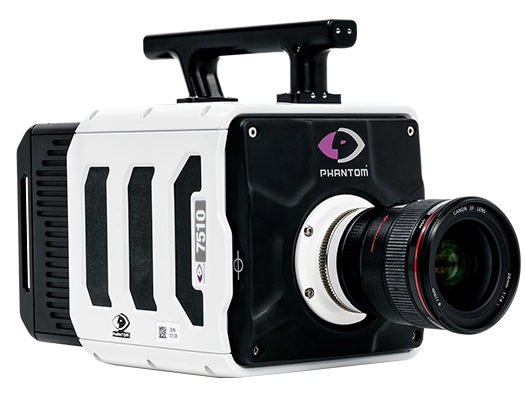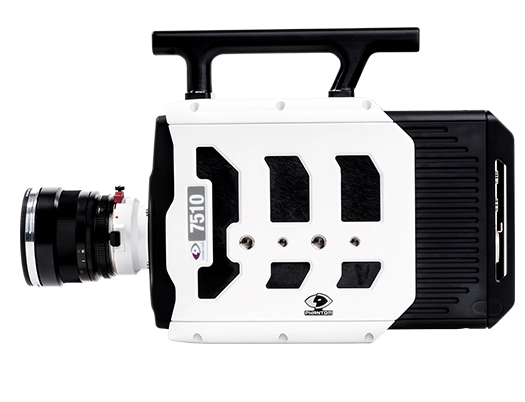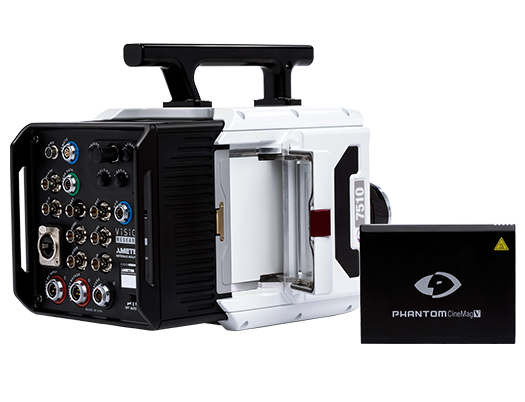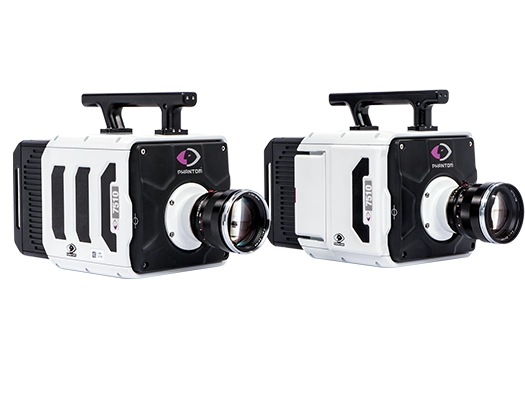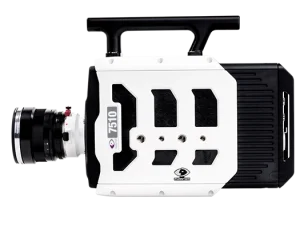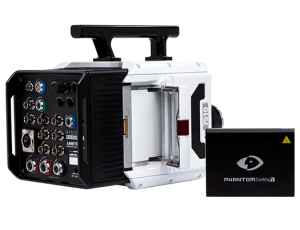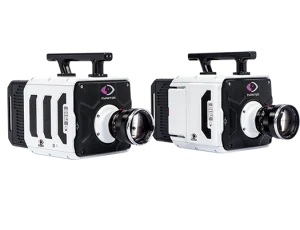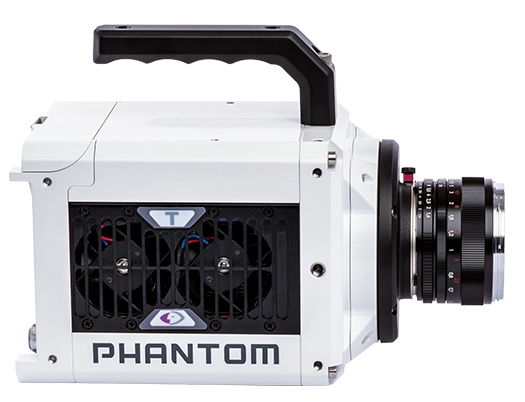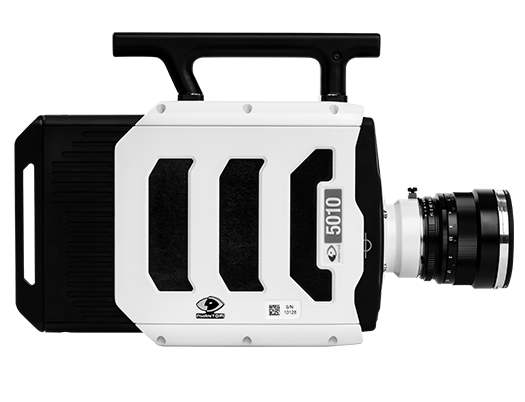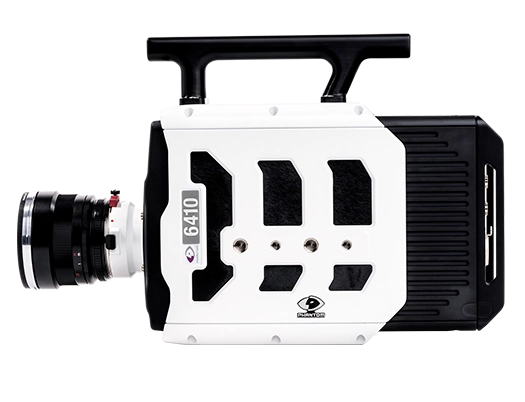Overview
The Phantom TMX 7510 is the first high-speed camera in the world to use back side illumination technology. This innovation has enabled Vision Research engineers to design a custom sensor that can achieve unprecedented speeds while maintaining the image quality that Phantom cameras are known for.
By using BSI technology, the TMX cameras can process images more efficiently, allowing them to maintain high throughput levels even when frame rates increase. The TMX 7510 can achieve a throughput of 75 Gigapixels, which can provide over 76,000 fps at a resolution of 1280 x 800. At lower resolutions, the camera can record over 770,000 fps in standard mode and up to 1.75M fps and 95ns in FAST mode. To learn more about how BSI sensor technology has transformed high-speed imaging, you can read our whitepaper.
One constant truth about high-speed imaging is that “increased speed requires increased light.” The unique back side illuminated sensor in the Phantom TMX 7510 overcomes this issue by moving the metal parts of a traditional sensor that interfere with incident light to the photodiode to the back of the sensor. This allows more light to reach each pixel, improving light sensitivity and QE.
This groundbreaking platform is part of a new generation of cameras that offer greater throughput, premium features, and improved performance. The TMX 7510’s flexibility ensures that it can produce images that meet the needs of scientific analysts. The ability to select binning mode allows for a variety of resolutions without sacrificing speed. For example, in standard mode, the TMX 7510 can reach over 300,000 fps at a resolution of 1280 x 192 (long, thin rectangle). But by switching to binning mode, the same speeds can be achieved at 640 x 384 (shorter and wider rectangle). Researchers can choose the resolution option that best fits the size and shape of their high-speed event.
The incredible speeds of the TMX 7510 mean that efficient data management is essential to minimize downtime. The camera has up to 512GB of onboard RAM, can be used with the custom non-volatile data storage device called the Phantom CineMag, and comes with 10Gb Ethernet download as standard. All of these workflow tools are available on every TMX.
Like most Phantom cameras, the TMX 7510 has interchangeable lens mounts (PL, C, M42, and Canon EOS), allowing users to choose high-quality and specialized optics without limitations. The camera mount can be customized for each specific test as needed.
BSI Technology
BSI technology provides increased processing efficiency, allowing TMX cameras to maintain their high throughput levels even as frame rates increase. The TMX 7510 has 75 Gigapixel throughput which can provide over 76,000 fps at a full 1 Mpx resolution of 1280 x 800. At reduced resolutions the camera will record at over 770,000 fps in standard mode and up to 1.75M fps and 95ns with the FAST mode.
BSI (Back-Side Illumination) technology is a method used in the TMX high-speed cameras, to improve the sensitivity and image quality of the camera’s sensor. In a traditional sensor, the light-sensitive pixels are located on the front side of the sensor, with electronic components such as transistors located on the back side. In a BSI sensor, the light-sensitive pixels are located on the back side of the sensor, with the electronic components on the front side. This allows for more light to reach the pixels, resulting in a higher signal-to-noise ratio and improved low-light performance. Additionally, BSI sensors are typically smaller and thinner, allowing for more compact camera designs.
For an in-depth look at how this technology has revolutionized high-speed imaging, read our whitepaper on BSI Sensor Technology.
One truth of high-speed imaging that never changes is that, ‘with increased speeds comes the need for increased light’. The unique back side illuminated sensor found in the Phantom TMX 7510 deals with this issue by locating the metal parts of a traditional sensor that interfere with incident light to the photo-diode to the back of the sensor. Moving those key elements to the back of the sensor allows even more light to reach each pixel, improving light sensitivity and QE.
Highlights
- The Phantom TMX 7510 1-Mpx camera has the industry’s first high-speed back side illuminated (BSI) sensor,
- Sensitivity: Quantum Efficiency*
- Mono: 77.6%; Binned 72.0%
- Color: 64.9%
- Designed for true high-speed performance.
- 76,000 fps at full 1280 x 800 resolution
- 1.75M fps with FAST option at reduced resolutions.
- 18.5 micron pixel
- 12-bit depth
- CineMag V compatibility
- 511 Memory partitions
- Side mounting
- Full Phantom Features and connectivity
- Programmable I/O – Assign and define camera signals
*QExFF at 532nm
FPS and Resolution in Standard Mode
| Resolution | 1280 x 800 | 1280 x 192 | 1280 x 128 | 1280 x 64 | 1280 x 64* | 1280 x 32* |
|---|---|---|---|---|---|---|
| FPS | 76.000 | 308.820 | 456.520 | 772.050 | 875.000 | 1.750.000 |
| *FAST Option |
FPS and Resolution in Binned Mode
| Resolution | 640 x 384 | 640 x 320 | 640 x 256 | 640 x 192 | 640 x 128 | 640 x 128* | 640 x 64* |
|---|---|---|---|---|---|---|---|
| FPS | 308.820 | 375.000 | 456.520 | 617.640 | 772.050 | 875.000* | 1.750.000* |
| *FAST Option |
